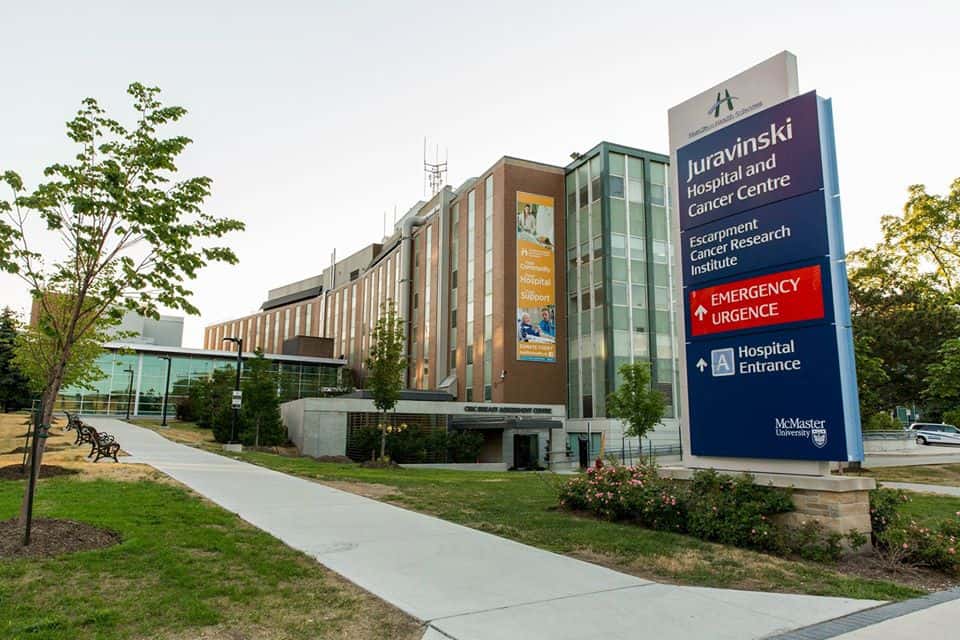Hamilton faces ‘long and lasting COVID hangover’: hospital CEO
Published February 7, 2022 at 11:30 pm

Top executives at Hamilton’s two hospital networks warned Monday that the toll from combatting COVID-19 might lead to a less healthy city overall.
There are some hopeful trends for containing spread in the city. The positivity rate of those who have been tested is 14.6 per cent, which is near the provincial average and about half of what it was in mid-January. Hospital admissions with COVID are averaging eight per day, after being in double figures not so long ago. There are 44 active outbreaks, which is also less than half the tally of a few weeks ago, when the public health unit had to stop monitoring outbreaks in private workplaces.
Both Hamilton Health Sciences (HHS) and St. Joseph’s Healthcare Hamilton (SJHH) had to ramp down procedures last month in order to assign skilled healthcare workers to treating COVID-19. And that is where there will be a knock-on effect.
“We are seeing the effects of what we think will be a long, and lasting, COVID hangover,” HHS president and CEO Rob MacIsaac said at a media briefing on Monday. “Deferred care from the previous ramp-downs, and people putting off seeking care because of the pandemic, are straining local hospitals. The result of all of this is a less healthy population with more advanced illness.
“And, looking ahead, this will mean more crowded EDs (emergency departments) and hospitals for the foreseeable future. This pandemic has really shone a bright light on deficiencies that really existed long before COVID.
“We need more beds, both hospital and community. Our hospital infrastructure is aging, and we need more skilled workers.”
MacIsaac offered a reminder that the surgeries are not “cosmetic,” but ones that offer an improved quality of life and a better chance to age successfully.
“There’s a real toll and human suffering for the folks who are getting surgeries deferred. We are beside ourselves seeing it happen.”
City of Hamilton COVID-19 Operations Chief Michelle Baird confirmed during the same briefing that the city has now surpassed 500 deaths linked to COVID-19. While that is a grim milestone, she noted public health “are seeing some signs” that the plateau or peak with Omicron cases is occurring.
Both HHS and St. Joe’s hospital beds have been running at close to or above 100 per cent capacity for several weeks.
Hamilton Health Sciences, as of Monday, was caring for 141 COVID-19 patients. Just fewer than one-third, 46, were admitted to hospital for COVID-19, and the other 95 were admitted with another condition and were found to be positive for the virus. St. Joe’s was caring for 55 patients with COVID-19. Farrell did not give the for/with breakdown, but said that 11 out the 28 ICU patients in the hospital network have COVID-19.
While the Ontario Ministry of Health has said that some procedures that were paused can resume. But MacIsaac and St. Joe’s president Melissa Farrell clarified that this is ways off for Hamilton hospitals after the number that Omicron has done on their staff and resources since December.
“We’ve been seeing some of the modelling coming out from the Ontario COVID-19 Science Table, we’re seeing some of the trends really show us that we’ve hit peak,” Farrell said. “We’re moving through that. But Hamilton and this surrounding region, Niagara included, has been the epicentre for Omicron. And that means, although it’s great to hear we’ve passed the peak, we have to emphasize that we’re still dealing with the (patient) capacity and staffing pressures. And we expect this to continue over the coming months.
“From a surgical and procedural ramp-up perspective, we’ve actually been spending the last few weeks just trying to get our priority surgical procedural and care completed,” Farrell added. “Our priority really remains on essential services. Ramping up any further than that is a few weeks away.”
Farrell also noted that St. Joe’s Monoclonal Antibody Therapy Clinic at the Charlton hospital campus is continuing to get results. The pilot program provides treatment for high-risk outpatients, allowing them to recover at home while also freeing up hospital beds.
“The clinic has treated over 300 patients to date, and less than 10 have needed hospitalization,” Farreell said. “It really is a success story.”
insauga's Editorial Standards and Policies advertising





